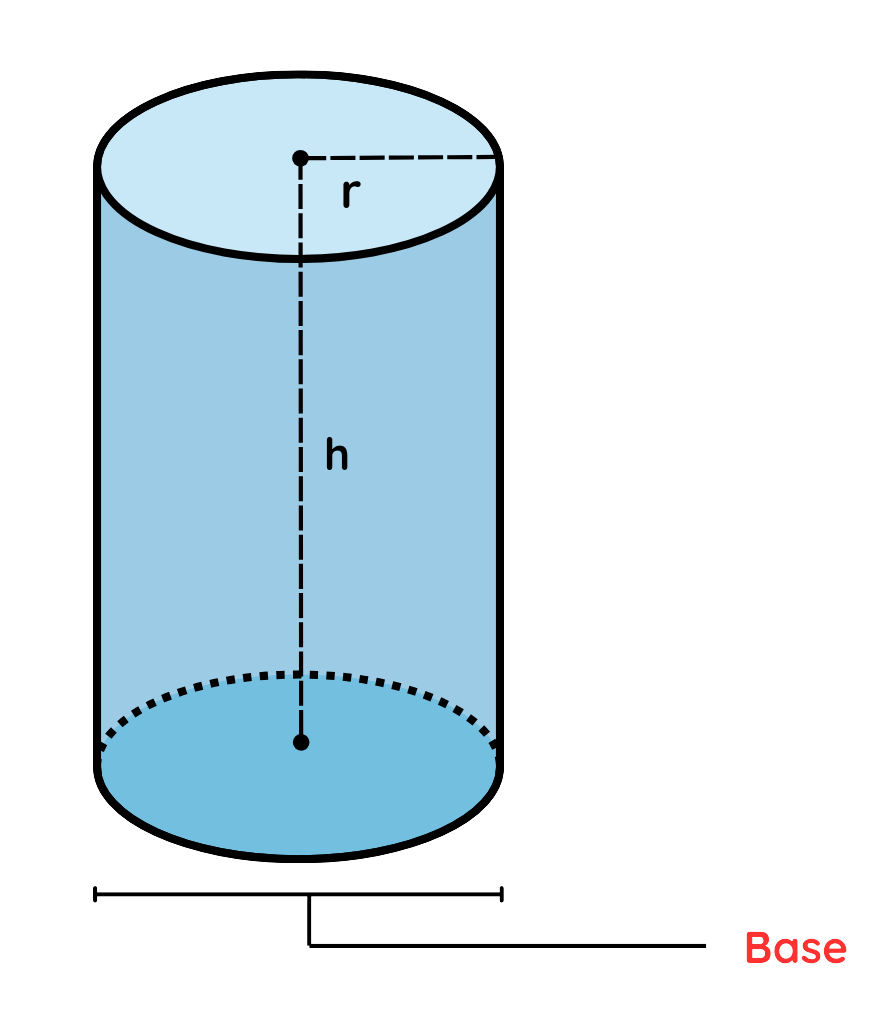Cylinder and Spheres – GCSE Maths
Introduction
- Cylinders and Spheres are three-dimensional geometric shapes that play essential role in mathematics, architecture, engineering, and everyday life.
- Both shapes can be described using the radius (r) as a key measurement, but they differ in shape and symmetry.
Real life Examples:

What is a Cylinder?
- A Cylinder is a three-dimensional geometric shape with two parallel circular bases that are congruent (same size and shape).
- These Bases are connected by a curved surface.
Key Features of a Cylinder:
- Bases – Two circular and parallel faces.
- Height (h) – The perpendicular distance between the two bases.
- Radius (r) – The distance from the center to the edge of the circular base.

What is a Sphere?
- A Sphere is a perfectly symmetrical three-dimensional shape where Every point on the surface is the same distance from a central point (called the center).
- It has no edges or vertices
Key Features of a sphare:
- Radius (r) – The distance from the center to any point on the surface.
- Diameter (d) – Twice the radius (d=2r).

How to Find the Volume of Cylinder and Spheres?
- Volume is the amount of space occupied by an object.
Volume of a Cylinder:
- The Formula for its volume is:

Where,
- r = radius of the base
- h = height
Volume of a Sphere:
- The Formula for its volume is:

Where,
- r = radius of the base
Steps to Calculate Volume for Cylinder and Sphere:
- Step#1: Find the radius or height.
- Step#2: Put the values in formula.
- Step#3: Compute the Result.
 Solved Example
Solved Example
Problem: A cylindrical water tank has a diameter of 14 meters and a height of 5 meters. Calculate its volume. (Use π = 3.14)

Solution:
Step #1: Find the radius:
- Given diameter (d) = 14 m

Step #2: Put the values in formula:

Step #3: Compute the Result:

The Volume is 769.69m³
Final Answer: 769.69m³
 Solved Example
Solved Example
Problem: A basketball has a diameter of 24 cm. Calculate its volume. (Use π = 3.14)

Solution:
Step #1: Find the radius:
- Given diameter (d) = 24cm

Step #2: Put the values in formula:

Step #3: Compute the Result:

The Volume is 7238.23cm³
Final Answer: 7238.23cm³
How to Find the Surface Area of Cylinder and Spheres?
- Surface area is the Total Area of all the surfaces (faces, bases, and curved sides) that cover a 3D object.
Surface area of a Cylinder:
- The Formula for its Surface area is:

Where,
- r = radius of the base
- h = height
Surface area of a Sphere:
- The Formula for its Surface area is:

Where,
- r = radius of the base
Steps to Calculate Surface Area for Cylinder and Spheres:
- Step#1: Find the radius or height.
- Step#2: Put the values in formula.
- Step#3: Compute the Result.
 Solved Example
Solved Example
Problem: A pipe has a radius of 5 cm, and a height of 12 cm. Find its total surface area. (Use π = 3.14)

Solution:
Step #1: Find the radius:

Step #2: Put the values in formula:

Step #3: Compute the Result:

The Surface Area is 534.07 cm2
Final Answer: 534.07 cm2
 Solved Example
Solved Example
Problem: A globe has a diameter of 30 cm. Find its surface area. (Use π = 3.14)

Solution:
Step #1: Find the radius:
- Given diameter (d) = 30cm

Step #2: Put the values in formula:

Step #3: Compute the Result:

The Surface Area is 2827.43 cm2
Final Answer: 2827.43 cm2

